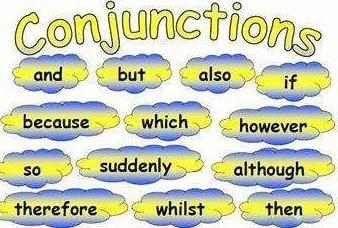中考英语连词专项训练第三讲(中考英语复习冲刺)
CONJUNCTION

连词是上海历届初三生都需掌握的知识点之一,它始终活跃在各大题之中,作用不容小觑。标*的部分尤其需要大家重视。
接下来我将根据《上海市初中英语学科教学基本要求》中的能力水平要求进行要点解析。

要点解析
概念连词是虚词,起着连接词与词、短语与短语、句子与句子的作用,所以连词不能独立担任句子的成分。连词包括并列连词和从属连词。
(一)并列连词
1. 表示并列关系
1)and的基本用法:and意为“和”“而且”,用来连接对等关系的词与词、短语与短语、句子与句子。
例句:I went to the Century Park and he went to the Disneyland.
and的特殊用法: and用在祈使句中,句型为“祈使句,and...”,相当于“If you...,you’ll...”。
例句:Use your head, and you’ll find a way. =If you use your head, you’ll find a way.
2)not only...but also(不但……而且……);as well as(又,不但……而且……);both...and(既……又……)这三个是同义词组。在连接主语时谓语动词的数有区别。
not only…but also连接主语时,谓语动词随邻近的主语而定。
例句:Not only the students but also the teacher was against the plan.
Not only the teacher but also the students were against the plan.
as well as 连接主语时,谓语动词随as well as前面的主语而定。
Mr.Lin as well as his parents joins in the party.
both…and… 连接主语时,动词用复数。
例句:Both Shanghai and New York have traffic problems.
3)neither...nor:既不……也不…… 用来否定both…and。连接主语时,谓语动词随邻近的主语而定。
例句: Neither you nor he was selected for the job.
2. 表示选择关系:
1) or的基本用法:or意为“或”。用来表示选择。
例句: Which club do you prefer to join, the chess club C the dancing club?
A) so B) but C) or D) for (2020年中考真题)
or的特殊用法:or用于祈使句中,句型为“祈使句,or...=If you don’t...,you’ll...”,意为“请……,否则……”,有转折的意思。
例句: Leave the reference books behind, or you won’t be able to think independently.(2015年中考真题)
补充:or疑问句的读法:or前面的部分用升调,后面的部分用降调。
2) either…or 或者……或者: 连接主语时,谓语动词随邻近的主语而定。
例句: Either you or he is right.
3. 表示转折关系
but的基本用法: 意为“但是,可是,而”,表示转折关系。
例句: Peter spent half a day fishing by the river, but he didn't catch anything.(2018年中考真题)
but的特殊用法: but还可以表示“除了……以外”。
例句:No one but she knew about it exactly.
补充:but和although不能在一起连用。
例句:It was raining hard, but they went on working.
=Although it was raining hard, they went on working.
4. 表示因果关系
1)so的基本用法:所以,因此;于是;非常;也,同样
例句:The flight was delayed by the storm, so the passengers had to wait at the airport.(2016年中考真题)
例句:There was something wrong with my car, so I went to work by underground.(2019年中考真题)
2)for的基本用法:意为“因为“,是一个并列连词,用来附带解释说明前一分句的原因或理由,for引导的并列句,一般放在所要说明的句子的后面来补充说明理由
例句:Jerry lost his way in the field, _____ the ground was covered with thick snow.
A) or B) for C) but D) so (2018黄埔一模)
例句:Joe was surprised that Jane was thirty minutes late, _______ she always arrived on time.
A) but B) so C) for D) or (2018虹口二模)
(二) 从属连词
常用的从属连词有:
1. 条件状语从句: if, unless, as long as
2. 时间状语从句:when, while, as, until, as soon as, before, after, since
3. 目的状语从句: so that
4. 原因状语从句: because, since, now that, as
5. 结果状语从句:so…that, in order that
6. 让步状语从句:though, although, even if
7. 比较状语从句: than, as…as, not as(so)…as
用法辨析
1. 条件状语从句:
if意为“如果”,unless意为“除非;如果不”, 相当于if...not...,有时二者可以换用。
as long as意为“只要”。
例句: If you don’t visit him tomorrow, he will be angry
= He’ll be angry unless you visit him tomorrow.
The nurse won’t leave her patientsA she’s sure they are all taken good care of.(2016年中考真题)
A) unless B) because C) since D) if
Vivian will take her daughter to the amusement parkA she gets the tickets.(2020年中考真题)
A) if B) until C) although D) unless
2. 时间状语从句:
1) when、while和as意为“当、、、时候”,有时可以互换。区别如下:
when引导的从句谓语动词既可以是延续的也可以是非延续的, when还可以表示“就在这(那)时”。
while引导时间状语从句,从句的谓语动词要用延续性。while除了作“在....时候”解之外,还有一个重要用法,表示“对比”,可以译为“而”。
as 意为“随着”,“一边、、、一边”。
例句: When Linda came in, I was reading a novel.
My mother is cooking while my dad is reading a newspaper.
As you grow up, you’ll know better and better about yourselves.
Mr Black walked around and offered help Awe were doing an experiment.
A)while B)although C)until D)unless (2018年中考真题)
Tony was drawing a picture A I was doing my homework at that time.(2019黄埔二模)
A. while B. because C. until D. if
2)as soon as一……就, 当主句是一般将来时,as soon as引导的从句要用一般现在时.
例句: They will post the tickets to me as soon as they receive my check.
I gave the alarm as soon as I saw the smoke.
3)till和until既可以是从属连词,也可以是介词;它们后面可以跟一个句子也可以跟名词或词组。句中(如果是主从复合句,则主句)的动词若是终止性动词,则要用否定式。一般认为till不如until正式,在书面语中不常用。
例句: He stayed there till/until his mother came back.
John didn't give up looking for a job Ahe got an offer from a German company.
A) until B) since C) because D) if (2014中考真题)
4)before意为“在……之前” 表示两件事的先后关系。主句为肯定句时,before引导的从句动作后发生;主句为否定句时,before引导的从句动作先发生。
例句: I started my meal before he arrived. (从句动作后发生)
He didn’t arrive before I returned. (从句动作先发生)
补充:用在不同的结构中,连词before译成中文有不同的表达。
意为 “…(之后)才“,主句常用肯定形式。
例句: It will be ten years before we meet again.要十年后我们才能再相见。
意为“(不久)…就” 主句常为否定形式。
例句: It won’t be long before you regret. 不久你就会后悔的。
3. 目的状语从句
so that, in order that的意思是“目的是……;结果……”,既可以引导目的状语从句,也可以引导结果状语从句。引导目的状语从句时,从句的谓语里常有can,could,may,might,will,would等情态动词。而引导结果状语从句时,则通常没有情态动词。
例句:The little boy saved every coin so that he could buy his mother a present. (目的)
引导目的状语从句可以和in order to / so as to进行转换。
4. 原因状语从句
because意为“因为”,引导原因状语从句。常用于回答why引导的特殊疑问句,不能和so连用。as用于表示理由是已知的,多用于句首,语气较弱。since相当于now that,意为“既然,由于”。表示对方已知道的事实和理由,语气比because弱。
例句:
As it is raining, let’s stay at home.
Since no one is against it, we’ll pass it.
The two companies decided to work together A they had common interest. (2017年中考真题)
A) because B) unless C) but D) or
5. 结果状语从句
so...that意为“如此/太……以至于……”,that引导结果状语从句。若that后面的从句是否定句的话,可以用too...to句型。从句是肯定句用adj./adv. enough to.
例句: She was so exhausted that she couldn’t move on. (保持句意基本不变)
=She was too exhausted to move on.
She was so lucky that she won the first place in the English Speech Contest.(保持句意基本不变)
She was lucky enough to win the first place in the English Speech Contest.
6.让步状语从句
though/although意为“虽然”,引导让步状语从句。它们都不能与but连用。但可以和still, yet连用。
even if意思是“即使,尽管,虽然……也”,其所表达的意思比although更强烈,也可以强调假设性让步。
例句:Even if it rains tomorrow, we will still keep our plan.
D the journey was tiring, Jeff thought it was worth both the time and the money.(2019年中考)
A.As B. Since C. Unless D. Although
7.比较状语从句
than 意为“比”,as…as 意为 “像……一样” not as(so)…as 意为 “不像……一样”。
例句:He can sing as well as his sister.
He doesn’t do the homework as/so carefully as his brother.
Tom is taller than any other student in the class.
,免责声明:本文仅代表文章作者的个人观点,与本站无关。其原创性、真实性以及文中陈述文字和内容未经本站证实,对本文以及其中全部或者部分内容文字的真实性、完整性和原创性本站不作任何保证或承诺,请读者仅作参考,并自行核实相关内容。文章投诉邮箱:anhduc.ph@yahoo.com






